The ARM vs x86 Wars Have Begun: In-Depth Power Analysis of Atom, Krait & Cortex A15
by Anand Lal Shimpi on January 4, 2013 7:32 AM EST- Posted in
- Tablets
- Intel
- Samsung
- Arm
- Cortex A15
- Smartphones
- Mobile
- SoCs
Cortex A15: Kraken
While SunSpider wasn't a great performance target for Exynos 5250, Kraken is a different story entirely. The Cortex A15s complete the task significantly quicker than the competition, and as a result achieve competitive energy usage although at significantly higher peak power consumption.
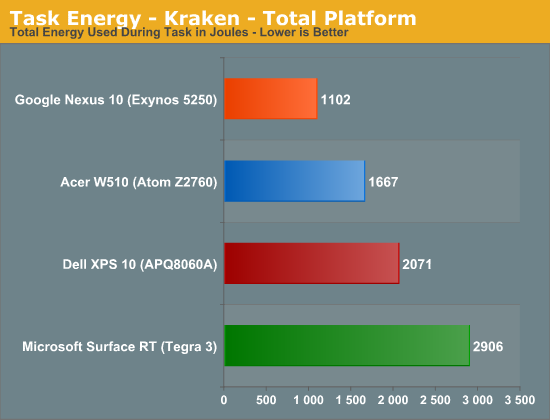
Despite the high peak power consumption of the Nexus 10 and its Cortex A15s, total energy usage is the lowest out of any of the contenders here since the Exynos 5250 is able to complete the benchmark so quickly. Intel is up next, followed by Qualcomm.
Once again we're seeing peak CPU power usage of ~3W, compared to < 1.5W for the competition. The performance advantage is enough to justify the added power, however in devices that simply can't dissipate this much heat (e.g. smartphones) I wonder what will happen.

Isolate the CPU cores themselves and the race is much closer, this time with Qualcomm taking the lead.
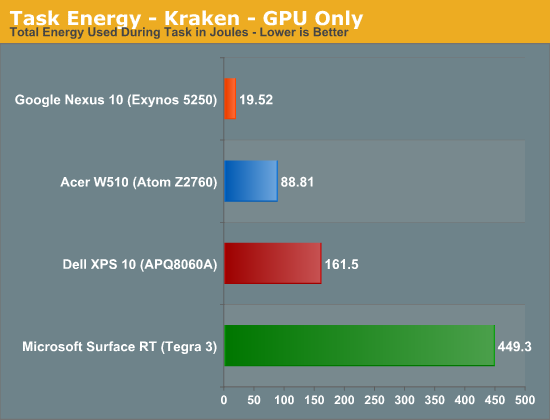
When mostly idle, the Mali-T604 on Samsung's 32nm LP (HK+MG) process barely sips power.
Kraken - Max, Avg, Min Power
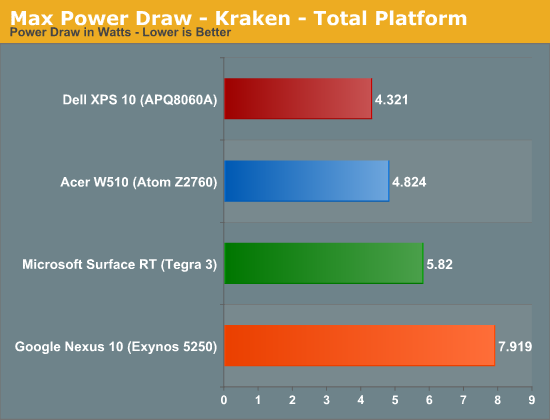
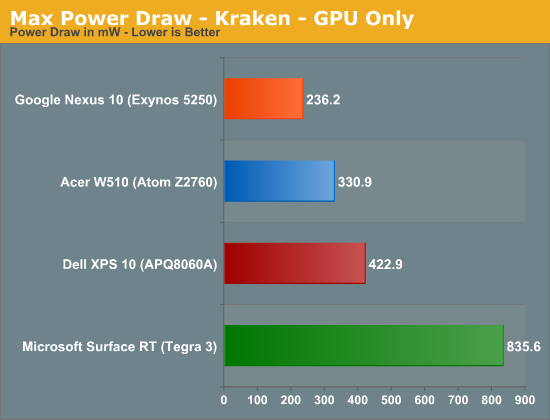
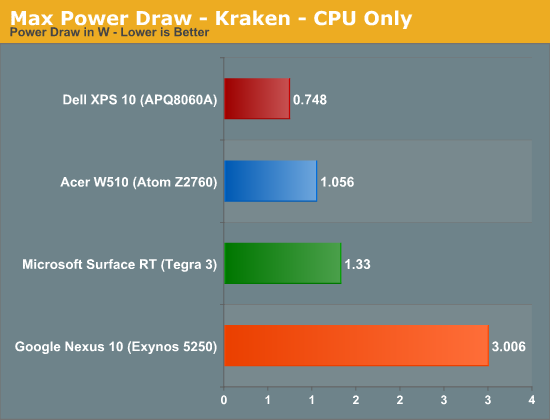
Average Power Draw
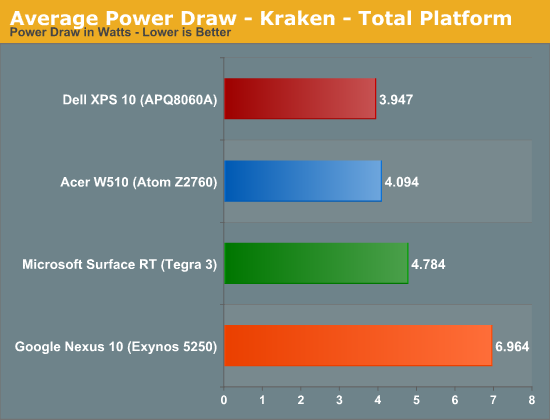
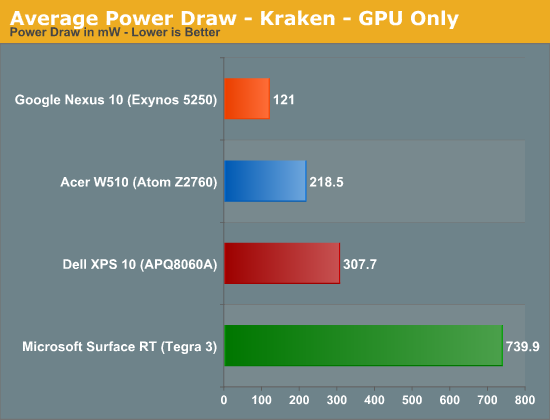

Minimum Power Draw

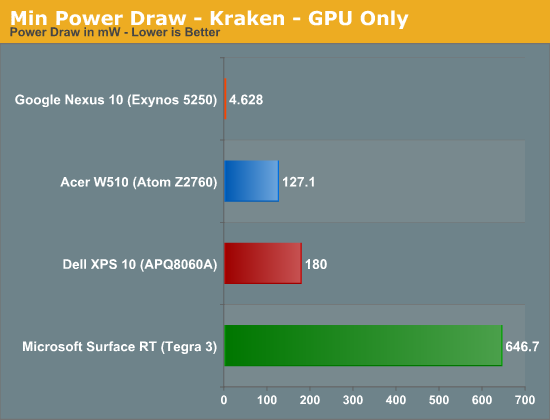
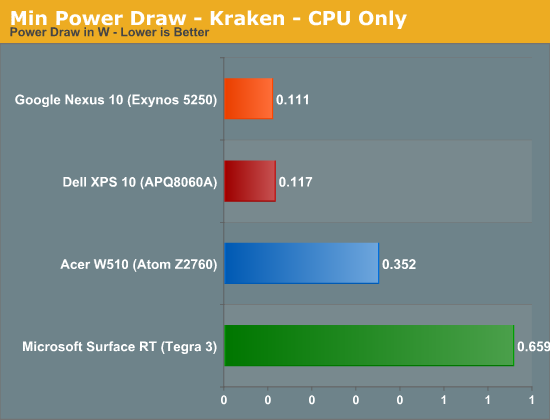


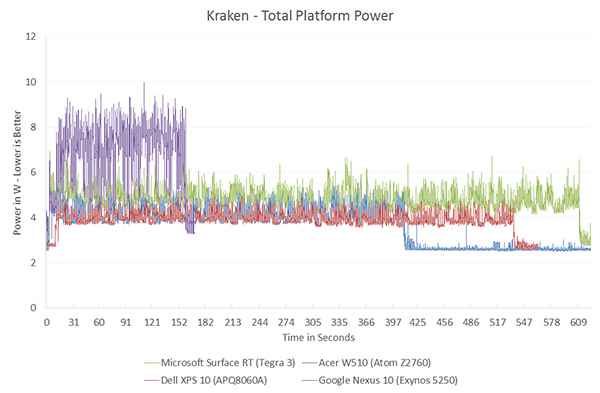
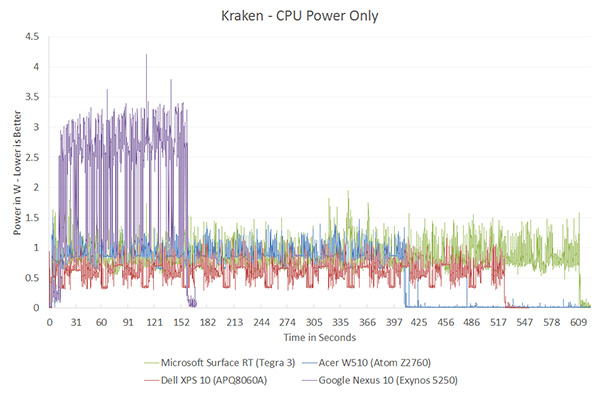
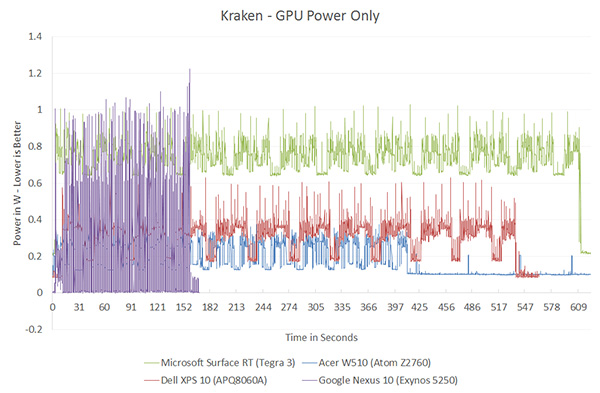








140 Comments
View All Comments
djgandy - Friday, January 4, 2013 - link
People care about battery life though. If you can run faster and go idle lower you can save more power.The next few years will be interesting and once everyone is on the same process, there will be less variables to find to assert who has the most efficient SOC.
DesktopMan - Friday, January 4, 2013 - link
"and once everyone is on the same process"Intel will keep their fabs so unless everybody else suddenly start using theirs it doesn't look like this will ever happen. Even at the same transistor size there are large differences between fab methods.
jemima puddle-duck - Friday, January 4, 2013 - link
Everyone cares about battery life, but it would take orders of magnitudes of improvement for people to actually go out of their way and demand it.Wolfpup - Friday, January 4, 2013 - link
No it wouldn't. People want new devices all the time with far less.And Atom swaps in for ARM pretty easily on Android, and is actually a huge selling point on the Windows side, given it can just plain do a lot more than ARM.
DesktopMan - Friday, January 4, 2013 - link
The same power tests during hardware based video playback would also be very useful. I'm disappointed in the playback time I get on the Nexus 10, and I'm not sure if I should blame the display, the SOC, or both.djgandy - Friday, January 4, 2013 - link
It's probably the display. Video decode usually shuts most things off except the video decoder. Anand has already done Video decode analysis in other articles.jwcalla - Friday, January 4, 2013 - link
You can check your battery usage meter to verify, but... in typical usage, the display takes up by far the largest swath of power. And in standby, it's the wi-fi and cell radios hitting the battery the most.So SoC power efficiency is important, but the SoC is rarely the top offender.
Drazick - Friday, January 4, 2013 - link
Why don't you keep it updated?iwod - Friday, January 4, 2013 - link
I dont think no one, or no anandtech reader with some technical knowledge in its mind, has ever doubt what Intel is able to come up with. A low power, similar performance or even better SoC in both aspect. Give it time Intel will get there. I dont think anyone should disagree with that.But i dont think that is Intel's problem at all. It is how they are going to sell this chip when Apple and Samsung are making one themselves for less then $20. Samsung owns nearly majority of the Android Market, Which means there is zero chance they are using a Intel SoC since they design AND manufacture the chip all by themselves. And when Samsung owns the top end of the market, the lower end are being filled by EVEN cheaper ARM SoCs.
So while Intel may have the best SoC 5 years down the road, I just dont see how they fit in in Smartphone Market. ( Tablet would be a different story and they should do alright.... )
jemima puddle-duck - Friday, January 4, 2013 - link
Exactly. Sometimes, whilst I enjoy reading these articles, it feels like the "How many angels can dance on the head of a pin" argument. Everyone knows Intel will come up with the fastest processor eventually. But why are we always told to wait for the next generation? It's just PR. Enjoyable PR, but PR none the less.